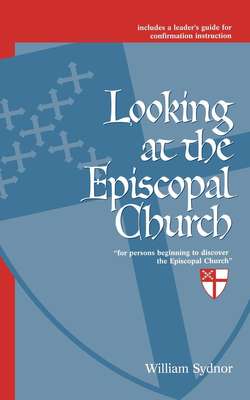Читать книгу Looking at the Episcopal Church - William Sydnor - Страница 10
Chapter 2 The House of God
ОглавлениеThe name “church” has a long history. In time, it came to mean “the house of the Lord” or God's house. And another word came to be associated with the people who worshiped in God's house—the Greek word ecclesia, from which we get ecclesiastic. Ecclesia, means, literally, “the called out assemble of people,” and “those who are called to assemble” (as by the town crier) in the Lord's Name. So “church” has come to mean both God's house and God's people.
Usually, the architecture of the building adds to our awareness that it is a place of Christian worship. There is a cross on the building and some sort of spire which raises our eyes toward heaven. It may have gothic arches which also point upward, and a tower that tells of God's protection of his people.
Even the position of the building on the lot has Christian significance. From ancient time, churches have been built with the altar at the east end so that the worshipers would be facing the rising sun, symbolic of the Lord's resurrection from the dead. This continues to be a practice even today; the National Cathedral in Washington, D.C., is an example of an eastward orientation. Also, the east is thought of as the direction from which Jesus shall come on the last day. “For as the lightening comes out of the east and shines as far as the west, so will be the coming of the Son of Man” (Matthew 24:27). For this reason, it was once a custom in Christian burial grounds to lay the dead to rest with faces toward the east.
The church building as God's home has been especially set apart for worship. This “setting apart” is called consecrating or dedicating, and takes place in a service performed by the bishop. A consecrated church building is used as a place to worship God and for no other purpose. In the consecration service, the building is given a Christian name. It may be named for our Lord or one of the apostles or saints—Christ Church…St. Matthew's Church…or St. Patrick's Church—or it may be named for a great doctrine of the Christian faith—the Church of the Incarnation…Holy Trinity Episcopal Church.
There is a variety of kinds of churches. Within the Episcopal Church, the principal church of the diocese where the bishop has his official seat or throne (a symbol of his authority) is called a cathedral. (The Greek word cathedra means seat or throne.) Most churches where the people of the community worship are called parish churches. In earlier times the parish was a geographic area within which the people lived who worshiped at the local church. This is less true today because people have greater mobility. Also, there are smaller churches called “missions” which have been started by a parish or the diocese, but which are not yet self-supporting.
In addition to the Episcopal churches of the community there are a number of other churches where Christian people worship—Baptist, Methodist, Roman Catholic, Presbyterian, Greek Orthodox to name only a few. There are also non-Christian places of worship—Jewish synagogues, Islamic mosques.
Now let's open the door and step inside that church on the corner.
